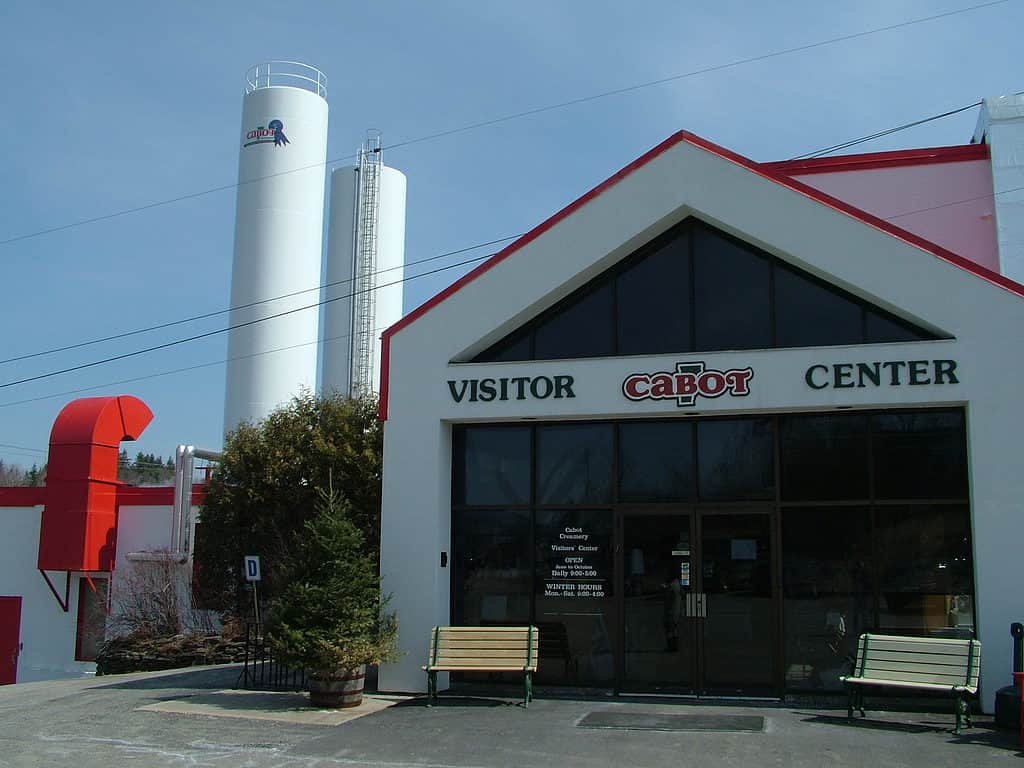Did you know that Vermont is the snowiest state in all of the United States? The Green Mountain State, Vermont, can receive as much as 89 inches of snow per year! Snow can begin as early as October and last through March or even April. However, what is the snowiest place in Vermont?
If you don’t know the answer, don’t worry! This complete guide will walk you through everything you need to know about the snowiest place in Vermont. Ready to learn more? Let’s dive in.
What Town Receives the Most Snow in Vermont?
When it comes to the snowiest state in the entire country, it can be difficult to pinpoint where exactly the snowiest place is. Many cities here receive more snow in their season than some places receive all year!
However, if you’re looking for the snowiest place in Vermont, look no further than Cabot. This little New England town can average around 100 inches of snow per year. That’s taller than the average artificial tree’s height!

Cabot is the snowiest place in Vermont, averaging approximately 100 inches of snow per year.
©TravelingOtter / Flickr – License
About Cabot, Vermont
Cabot is a small town in Washington County, Vermont, in the New England region of the United States. As of 2020, the census in the area showed that 1,443 people lived in the town. This is a decrease from earlier years.
Although Cabot is a small town, it consists of several smaller unincorporated villages. This includes the following ones:
- Cabot Village
- Cabot Plains
- South Cabot
- East Cabot
- Molly’s Pond
- Lower Cabot.
History
The snowiest place in Vermont can trace its name back to Lyman Hitchcock. Lyman, a major in the Continental Army, fell in love with a woman named Sophia Cabot during his service. Lyman had no way of marrying Sophia at the time without her father’s approval. However, after a large grant allowed him to become the second largest land buyer, Sophia’s father agreed. The couple was quickly engaged after that, and Lyman named the town after Sophia.
Although Cabot is said to be the only town in Vermont named after romance, the same cannot be said for other unincorporated areas. Molly’s Pond, for instance, was named after Indian Joe’s wife. Indian Joe was a Mi’kmaq man adopted by the Abenaki who grew up to join the Continental Army, just like Lyman Hitchcock.
During the Civil War in the late 19th century, around 300 men were eligible to be drafted from Cabot. Of this number, a little less than half volunteered. The men enrolled from Cabot experienced a fatality rate of 31 percent. As a result, a monument in the town now commemorates these lost lives.
The snowiest place in Vermont is also home to the renowned Cabot Creamery. Founded in 1919 by nearly one hundred farmers, the purpose of this still-functioning historic creamery was to help ship out excess dairy products produced on the farms of Cabot and the surrounding areas.

Cabot is home to Cabot Creamery, founded by nearly one hundred farmers in 1919 and still in use today, and supports local dairy farms.
©David Moore, CC BY-SA 2.5 <https://creativecommons.org/licenses/by-sa/2.5>, via Wikimedia Commons – License
Climate
Despite being the snowiest state, Vermont has what is known as a humid continental climate. The springs are muddy, summers mild, and fall bursting with colorful leaves. As winter comes, however, the state can drop drastically in temperature, especially in northern areas like Cabot.
The annual average temperature in all of Vermont is around 43 degrees Fahrenheit. However, the northwestern area (where Cabot is) is prone to be much colder than the southern and western regions of the states. It’s not uncommon to see a difference of as much as 10 degrees between the north and the rest of the state. Depending on the area, Vermont can get annual snowfall ranging from 60 inches to Cabot’s 100 inches.
Vermont is considered the seventh coldest state out of the entire country!

Vermont is the snowiest state in all of the United States.
©iStock.com/George Robinson
Wildlife
Vermont as a whole is home to over 15,000 species of animals! This includes nearly 200 species of birds and 58 species of mammals. The state bird is the hermit thrush, and the state reptile is the painted turtle. You can also expect to see many of the species common along the eastern coast, such as bears, gray foxes, and woodchucks.
There have been species to go extinct in Vermont. Some of them, like the wild turkey, were reintroduced at a later date and now have a thriving population. While many species of native wildlife have disappeared as a result of overhunting and loss of habitat, this isn’t the case for all species. One example would be many of the previously thriving bat populations of the state, which have now suffered greatly as a result of white-nose syndrome.
Invasive species are also common in Vermont, placing additional strains on the native populations. Some of the most notable invasive animals include the Asian spotted-wing drosophila and around twelve different fish species.
The photo featured at the top of this post is © iStock.com/Alex Boudreaux
Sources
- Vermont HIstory, Available here: https://vermonthistory.org/documents/VermontMagazine/29_4_SeptOct2017IndianJoe.pdf
- Cabot Historical Society, Available here: https://sites.google.com/site/histsocorg1/naming-cabot?pli=1
Thank you for reading! Have some feedback for us? Contact the AZ Animals editorial team.






